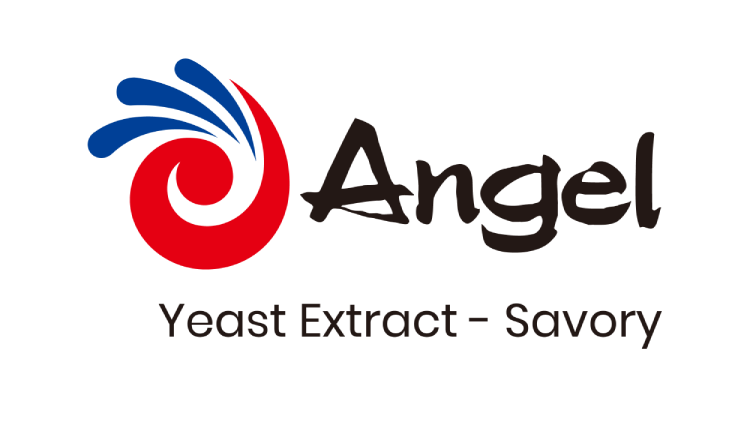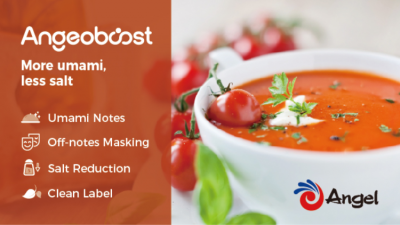Promotional Features
Clean, bold flavours: How yeast extract is helping food manufacturers untap the clean label trend
Simple, wholesome and natural – today’s health-conscious consumers are seeking out clean labels, favouring products with minimal processing and recognisable components over those with long ingredient lists.
As a result, the Clean Label Ingredients market is set to grow at a projected CAGR of over 14%, propelled by new launches to meet consumer demand and an increased interest in natural foods with functional benefits.1
By its very nature, yeast extract is a clean label ingredient that can offer a range of functional benefits. Chris Guo, Director of Protein Nutrition and Flavoring Technology Center at Angel Yeast, explains what makes yeast extract an ideal clean label ingredient and how it can help manufacturers unlock formulation challenges.
What do we mean by clean label and why has it become so appealing for consumers?
Clean label describes the concept of minimally processed, natural and wholesome foods. When a product has been made using as few ingredients as possible, and contains ingredients that are recognisable and understood by consumers, without artificial ingredients or synthetic chemicals, it can be termed as clean label.
In the aftermath of the COVID-19 pandemic, consumers are paying more attention to the nutritional functions of the foods they eat. As they increasingly opt for products that are free from excessive processing, this has driven awareness and interest in ingredient lists and clean labels.
How does yeast extract align as a clean label ingredient?
Yeasts are truly natural, occurring everywhere in nature as wild yeasts and are bred as culture yeasts to make beer, wine and bread. Yeast extract is made from fresh yeast – otherwise known as saccharomyces cerevisiae – and is a rich blend of natural components consisting of amino acids, carbohydrates, vitamins and minerals. So, unlike chemically-manufactured additives, yeast extract is a 100% natural food ingredient, and is both animal-free and GMO-free.
In the food industry, yeast extract as the main raw material, under the action of yeast extract enzymes or additional enzymes, is obtained after enzymatic autolysis and separation and extraction, with or without hot processing and other processes, and without producing any toxic and harmful substances.
Yeast extract is labelled as ‘yeast extract’ in the ingredient list or sometimes included in ‘natural flavour’, based on the requirements of the European Food Law. According to the Regulation (EC) No 1333/2008 of the European Parliament and of The Council on Food Additives, yeast extract is classified as a food ingredient in the food category. And according to the FDA 21CFR 184, it is defined as a safe substance which can be added into food directly.
What are the differences between monosodium glutamate (MSG) and yeast extract?
There are several differences. Firstly, monosodium glutamate is a food additive and, as such, requires to be marked in the form of an E number on the label. Yeast extract, on the other hand, is a natural food ingredient and not denoted as an E number.
Then there are the differences in the umami makeup. Glutamate is an amino acid found in protein, and occurs naturally in foods such as cheese, nuts and fruit and vegetables including tomatoes and mushrooms. It lends a umami and savoury flavour to foods. Adding MSG can improve the umami flavor of processed foods, such as condiments, but the overall umami flavour is not natural.
Yeast extract, however, is formed when enzymes break down yeast proteins into their taste-delivering components. It also contains other umami amino acids, umami peptides and natural nucleotides. The umami flavour is fuller, so it can be used in place of MSG to enhance and intensify the umami flavor. Angel’s Angeoboost series, for example, is a strong umami yeast extract, and a great option to replace part or the entire MSG dosage in formulations, and this can help manufacturers towards a clean label formula.
And finally, yeast extracts enhance not only umami, but also support full texture (thickness) and aftertaste, particularly in broths and stocks. This is mainly thanks to yeast protein enzymatic hydrolysis, various kinds of rich amino acids such as peptides which are similar to the ingredients of stew broth, increase the way seasoning is perceived. With MSG, the umami is relatively simple so it does not improve the perception of thickening. This is why replacing MSG with yeast extract can improve the overall quality of the finished product.
How does yeast extract deliver big flavours in small doses?
Yeast extract can enhance a savoury umami taste, as well as enhance mouthfeel. Thanks to its rich flavour, which is comparable to a bouillon or meat stock, it can be used in very small quantities and can bring out the existing flavours in savoury products. Only a small amount is needed to achieve excellent results in terms of flavour and taste – in fact the concentration of yeast extract in dishes, such as soups, is usually around 1-2% but the effect of improving the umami taste is much greater.
How can yeast extract help to address formulation challenges such as sodium reduction and off-notes masking?
At Angel Yeast, we have developed products with different application characteristics to meet the needs of manufacturers. For example, we have developed high umami yeast extract, Angeoboost, to replace MSG. We have also developed rich peptide yeast extract, Angeotide, for sugar reduction in beverages and high glutathione yeast extracts to assist in enhancing meat flavour. We research the characteristics of the salty substance in yeast extracts and the yeast extract product for salt reduction was developed.
Yeast extracts consist of a number of umami-giving substances – such as amino acids, proteins, carbohydrates, vitamins, peptides, nucleotides, minerals – that benefit an end product’s flavour and nutritional makeup.
Manufacturers can therefore use it to develop new products to meet customer needs and enrich the categories of these products. Also, using yeast extract can benefit an end product’s nutritional profile and elevate the taste. The addition of yeast extract can also help manufacturers address ongoing challenges around sodium and sugar reduction and masking off-notes. For example, using a specific yeast extract in soya drinks, almond drinks, energy drinks can help to mask off-notes and help to balance the overall taste profile.
And because yeast extract derives from natural fermentation, it is infinitely available and can help overcome raw material shortages in supply chains and support positive sustainability.
What makes yeast extract a versatile ingredient for manufacturers?
Yeast extract is already used in a diverse range of savoury products currently available to consumers, such as cooking sauces, bouillons, meat dishes, soups, sauces ready meals and savoury snacks. Because it does not contain animal ingredients, it is also suitable for vegan and vegetarian food products.
Product labels with “no added MSG”, “no added flavour enhancer” can benefit most from using yeast extract, because the ability of it to enhance umami is very obvious. In addition to salt reduction products, yeast extract can assist in salt reduction. Also, beverages which use sweeteners can also benefit from an off-note masking function by using a specific yeast extract.
Angearom, Angel Yeast’s flavour yeast extract series, has specific properties and flavour notes, such as chicken, beef, roast, bean or cheesy, while also being a clean label ingredient. Yeast extract can also be used as an alternative to food colours, such as caramel colour. Some kinds of yeast extract have dark brown colour and even chocolate colour, which can be a good option to replace caramel colour through a clean label way.
References
1. Market Research Report (April 2023).






